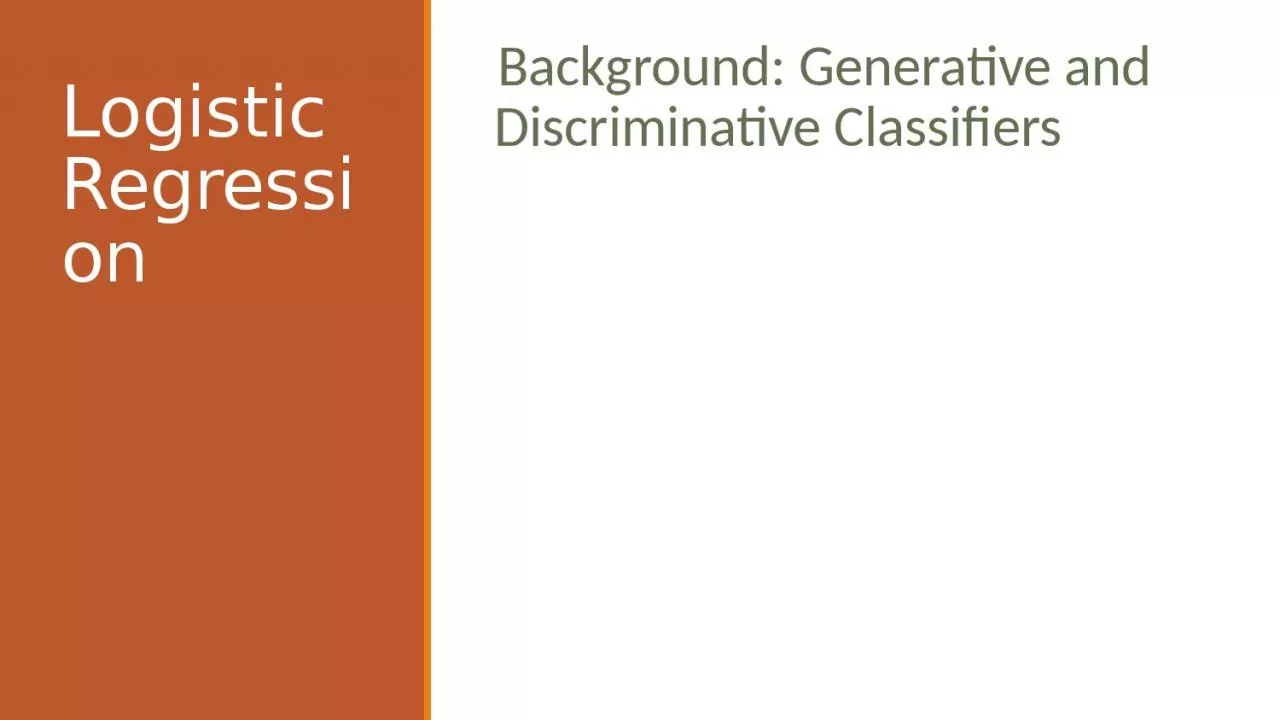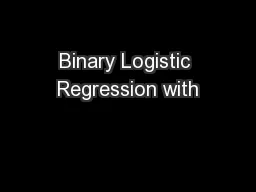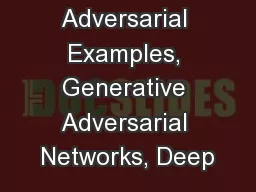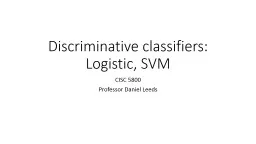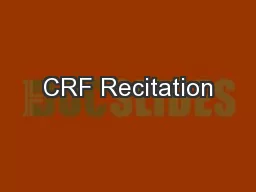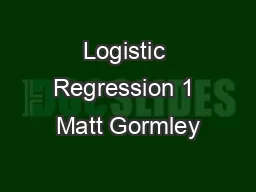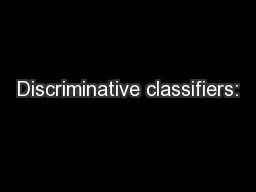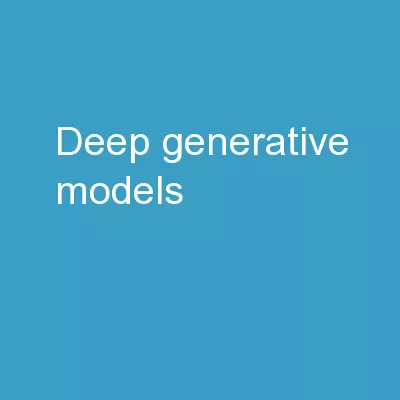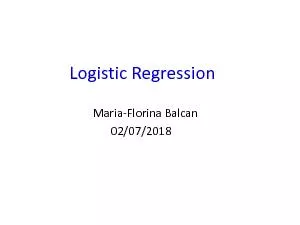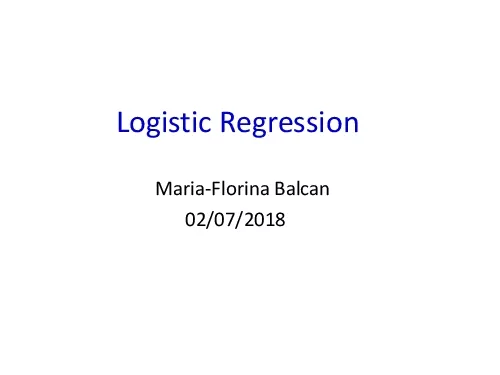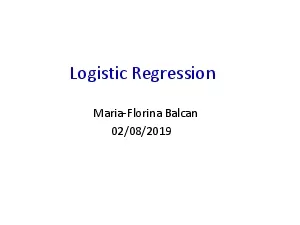PPT-Logistic Regression Background: Generative and Discriminative Classifiers
Author : linda | Published Date : 2023-08-23
Logistic Regression Important analytic tool in natural and social sciences Baseline supervised machine learning tool for classification Is also the foundation of
Presentation Embed Code
Download Presentation
Download Presentation The PPT/PDF document "Logistic Regression Background: Generati..." is the property of its rightful owner. Permission is granted to download and print the materials on this website for personal, non-commercial use only, and to display it on your personal computer provided you do not modify the materials and that you retain all copyright notices contained in the materials. By downloading content from our website, you accept the terms of this agreement.
Logistic Regression Background: Generative and Discriminative Classifiers: Transcript
Download Rules Of Document
"Logistic Regression Background: Generative and Discriminative Classifiers"The content belongs to its owner. You may download and print it for personal use, without modification, and keep all copyright notices. By downloading, you agree to these terms.
Related Documents

